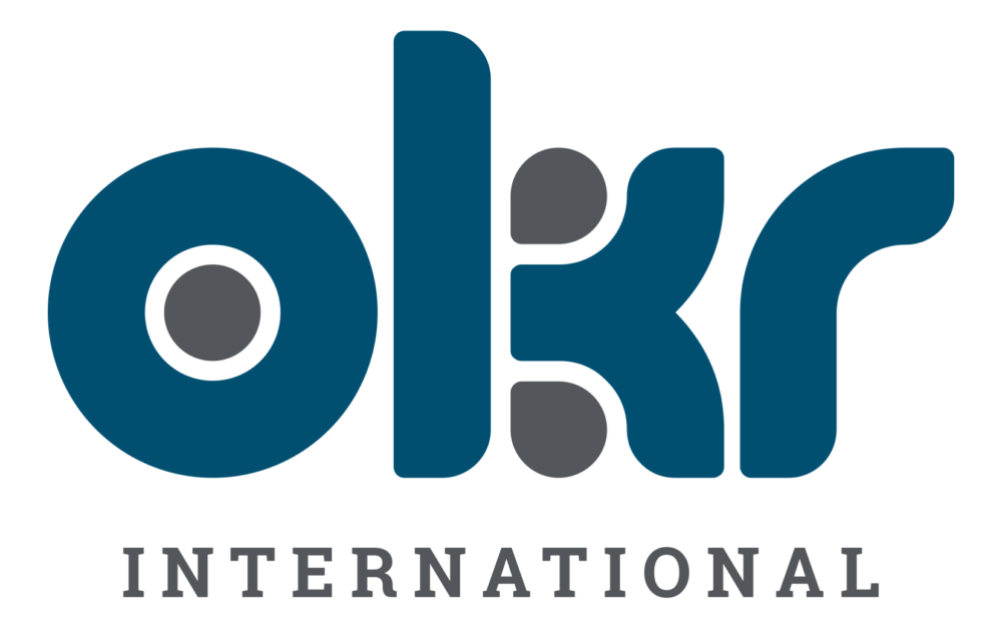
Learn OKRs
Your starting point for understanding the powerful framework of Objectives and Key Results. This page offers a curated collection of introductory reading materials designed to help you grasp the fundamentals of OKRs. Whether you’re new to the concept or looking to refresh your knowledge, our comprehensive resources will guide you through the basics and set you on the path to effective goal-setting and execution. Dive into our materials and begin your journey to mastering OKRs today!
Introduction to OKRs
Traditional approaches to goal setting and execution are becoming increasingly inadequate. The dynamic and fast-paced nature of modern markets demands a more agile, responsive, and transparent approach to managing organizational objectives. This is where the OKR (Objectives and Key Results) framework comes into play.
Today, the OKR framework is recognized as a powerful tool for driving organizational success, fostering alignment, and enhancing performance. Its adaptability and flexibility have made it a preferred choice for companies seeking to navigate the complexities of modern business environments. This handout aims to provide a comprehensive introduction to OKRs, exploring their history, defining their core components, and elucidating their superpowers that contribute to organizational agility, alignment, and value creation.
In Module 1, you will learn about the origins and evolution of OKRs, understand why they are crucial for success in today’s volatile marketplace, and gain insights into their four superpowers: Converting Strategy to Execution, Creating Higher Levels of Agility, Achieving Greater Alignment of Goals and Efforts, and Focusing on Value Creation. You will also delve into the definition and DNA of OKRs, exploring the roles of Objectives, Key Results, and Initiatives in driving execution excellence.
1. History of OKRs
The story of OKRs begins with Andy Grove, one of the co-founders at Intel, who introduced the framework in the 1970s as a way to align the company’s goals and objectives with its overall vision. Grove recognized that traditional methods of goal setting were not effective in ensuring that everyone in the organization was working towards the same objectives. With OKRs, Grove was able to create a system where each employee could set individual and team objectives that were aligned with the company’s larger goals.
One example of the successful use of OKRs at Intel is the creation of the Pentium chip in the 1990s. The development of the Pentium chip was a major undertaking, requiring significant investment and coordination across the organization. Using OKRs, Intel was able to align the goals and objectives of its engineering, manufacturing, and marketing teams towards the common objective of creating a revolutionary new chip. OKRs allowed the company to track progress towards this objective and make course corrections as needed. The success of the Pentium chip and other products developed using OKRs helped to solidify the framework’s reputation as a powerful tool for achieving success in the technology industry and beyond.
John Doerr, a venture capitalist, was introduced to OKRs by his mentor, Andy Grove, while working at Intel in the late 1970s and early 1980s. Doerr was impressed by the framework’s ability to align the goals and objectives of an organization and promote regular feedback and course correction.
Later, in 1999, Doerr introduced OKRs to Google when he became an early investor in the company. He saw the potential for OKRs to help Google, which was rapidly growing at the time, stay focused on its most important objectives and maintain a sense of direction and purpose. The use of OKRs played a key role in Google’s success and helped the company become one of the most successful and influential technology companies of the early 21st century.
As Google’s success became more evident, other organizations took notice of its goal-setting approach and adopted the OKR framework. Initially, Silicon Valley startups and tech companies, such as LinkedIn and Twitter, embraced the methodology for its structured, transparent approach to setting and achieving goals. Eventually, the adoption of OKRs expanded beyond the technology sector, with companies across various industries recognizing the value of the framework for driving growth, fostering alignment, and enhancing performance.
The widespread adoption led to further refinement and adaptation of the methodology to suit different organizations and contexts. While the core principles remained consistent, organizations experimented with various implementation strategies, such as adjusting the frequency of OKR review cycles and tailoring the granularity of objectives and key results. This adaptability and flexibility have contributed to the sustained popularity and relevance of OKRs.
Today, the OKR framework is widely recognized as a powerful tool for driving organizational success, used by companies worldwide, including non-profit organizations and government agencies. This book focuses on using these principles for personal growth and success – an area widely ignored so far.
2. Why OKRs?
Organizations today need to cultivate an ecosystem that is agile and responsive to ever-changing market conditions. While planning is essential, static plans are ineffective without a robust mechanism for aligning resources towards execution excellence. In such uncertain times, evaluating company performance only once a year paves the way for chaos.
OKRs enable teams and individuals to promptly assess market changes and embrace the concept of ‘failing fast.’ OKRs provide a structured framework for regular measurement and progress reviews, facilitating the rapid implementation of strategic and tactical initiatives. This approach ensures that organizations can mobilize their resources effectively, fostering a culture of agility and continuous improvement.
The Four OKR Superpowers
Converting Strategy to Execution: OKRs act as a conduit to convert strategy into quarterly goals, ensuring a laser focus on priorities with no more than 3 to 5 Objectives and Key Results per cycle. This rigor and discipline ensure frequent tracking, checking, and calibrating to stay on the right path.
- More Focus on Priority: With a growing number of companies trying to compete in the marketplace, everything seems to be a priority at work today. It’s not the strategy creation that most organizations struggle with; it’s the execution of that strategy where the challenge lies. OKRs act as a conduit to converting your strategy into quarterly goals. The laser focus on priorities comes from the OKR framework of no more than 3 to 5 OKRs for every cycle. OKRs provide the rigor and discipline to ensure frequent tracking, checking, and calibrating to stay on the right path.
Creating Higher Levels of Agility: Agility has become a cornerstone of competitive advantage. OKRs foster a mindset that embraces the “fail-fast” philosophy, encouraging teams to experiment boldly, iterate quickly, and pivot when necessary. This approach enhances responsiveness and innovation.
Embracing the “Fail-Fast” Philosophy: The “fail-fast” philosophy encourages teams to take bold risks, experiment with new ideas, and learn from failures quickly. This approach is vital for fostering a culture of innovation and continuous improvement. With OKRs, teams are empowered to set ambitious goals that push them out of their comfort zones. These goals are not seen as impossible but are aspirational and challenging, driving rapid and radical innovation.
Encouraging Bold Experimentation: OKRs encourage teams to experiment boldly. By setting stretch goals, teams are motivated to explore novel solutions and venture into uncharted territories. This bold experimentation is crucial for identifying new opportunities and staying ahead of the competition. OKRs provide a structured framework that supports these experiments, allowing teams to measure progress, assess outcomes, and make data-driven decisions.
Iterating Quickly: One of the key benefits of the OKR framework is its emphasis on regular measurement and progress reviews. This structure enables teams to iterate quickly. By reviewing OKRs frequently, teams can identify what is working and what is not, allowing them to make necessary adjustments in real-time. This iterative process ensures that efforts are continuously aligned with the organization’s strategic objectives, maximizing the chances of success.
Pivoting When Necessary: In a dynamic market environment, the ability to pivot quickly is crucial. OKRs facilitate this agility by allowing teams to reassess their goals and strategies regularly. If an approach does not yield the expected outcomes, teams can pivot without hesitation. This flexibility ensures that resources are redirected efficiently, focusing on the most promising initiatives and minimizing wasted effort.
Enhancing Responsiveness: OKRs amplify an organization’s responsiveness. By setting clear objectives and measurable key results, teams have a roadmap for achieving their goals. This clarity allows for swift decision-making and rapid execution. When changes occur in the marketplace or within the organization, teams can respond promptly, ensuring that the organization remains competitive and agile.
Fostering Innovation: Innovation is a key factor that keeps organizations relevant and future-proof. OKRs kindle the spark of innovation by setting a rhythm for teams to regularly challenge the status quo. Through the OKR framework, teams are encouraged to propose novel solutions and pursue ambitious projects. This continuous pursuit of innovation leads to the development of unique value propositions, increased productivity, and sustained growth.
Real-Time Adaptation: The transparency inherent in the OKR framework ensures that everyone in the organization is aware of real-time changes and their impacts. This visibility allows teams to re-align their efforts just in time, adapting to new information and shifting priorities. This real-time adaptation is essential for maintaining agility and ensuring that the organization can navigate the complexities of the market effectively.
Creating a Culture of Continuous Improvement: OKRs instil a culture of continuous improvement within the organization. By focusing on ambitious yet achievable goals, teams are motivated to strive for excellence. The regular review and adjustment of OKRs ensure that lessons are learned from both successes and failures, fostering a growth mindset and driving continuous improvement across the organization.
Greater Alignment of Goals and Efforts: Many organizations suffer from a “systemic disconnect.” OKRs enhance systems thinking by breaking annual goals into quarterly ones, ensuring alignment across teams and sub-teams. This transparency discourages silos and fosters collaboration, creating a well-oiled engine generating great value.
If the procurement team of a cell phone company is unable to get enough chips in time, the product development team’s goals of rolling out products in the marketplace will remain unachievable. Many organizations worldwide suffer from this malady – which can be termed a ‘systemic disconnect.’
OKRs enhance systems thinking by encouraging leaders to convert their strategy into annual goals and then further break those goals into quarterly ones. This process ensures alignment across teams and sub-teams, fostering a culture where everyone works towards the same goals. This alignment is further bolstered by a mix of top-down, bottom-up, and cross-functional collaboration, resulting in a well-oiled machine generating significant value. The transparency of OKRs discourages working in silos and fosters collaboration, ensuring everyone in the system pools their resources toward common goals. This has revolutionized the goal setting and execution process globally.
Need for Value Creation: OKRs focus on outcomes rather than activities. For example, comparing two hiring managers: one tasked with conducting 10 interviews daily (task-oriented) versus one focused on reducing the time to hire from 90 days to 45 (outcome-oriented). The latter approach leads to greater job satisfaction and ownership of results.
- The fourth superpower of OKRs is their emphasis on focusing on outcomes. For example, compare John, a hiring manager tasked with conducting 10 interviews per day, to Jane, who is focused on hiring and onboarding two best-fit candidates in the next three months. John’s approach is task-oriented, making his job monotonous, whereas Jane’s outcome-focused goal allows her to take charge of the results, leading to greater job satisfaction. Well-crafted Key Results are outcome-based rather than activity-based, empowering employees and teams to take ownership and accountability for results. Remember, OKRs are not just a to-do list!
3. Definition & DNA of OKRs
OKRs Definition: OKRs is defined as a goal management and execution system that contains no more than 3 to 5 Objectives for a given cycle, and no more than 3 to 5 Key Results per Objective.
– Nikhil Maini, CEO – OKR International
The DNA of an OKR has 3 critical components, they all work in tandem with each other and never without any one component missing.
- Objective: Helps you set direction. They are the heart of your OKRs. This is where the inspiration is derived.
- Key Result: Measures if you are on the right track. They are the head of your OKRs. This is where the measurement of success lies.
- Initiatives: Helps you choose what you need to do in order to be on the right track. They are the hands of your OKRs. This is where the implementation takes place.
Objectives: The Heart of OKRs
Objectives should give you a sense of direction and focus. It should answer the question – Where do I want to go? What do I want to achieve? What’s the most important goal? When well crafted, it should inspire you to work towards them. It brings ‘heart or emotionality’ to your endeavor.
Care must be taken that objectives are not created out of thin air; they need to be derived from the vision, mission, values, purpose, and strategy of the organization.
Guidelines:
- Objectives answer the question – Where do you want to go? What do we want to achieve?
- Ambitious, qualitative, exciting, directional, and actionable by the team or individual.
- Objectives can be Committed or Aspirational and start with action verbs.
- Objectives can be set for a year and then for every quarter.
- There are no more than 3 to 5 Objectives for a year or a quarter.
- Objectives could revolve around core factors like Customer, Performance, Revenue, Engagement, or Growth.
Key Results: The Head of OKRs
If Objectives help answer the questions – Where do I want to go? What is my goal? Key Results help answer the questions – How will I measure success? How will I verify that I’ve reached my goal? Quite simply put, KRs are indicators of success.
Key results are nothing but measurable outcomes which, when achieved, will directly advance the objective. Choosing the right KR is about being crystal clear on what you are trying to measure in the first place. Sometimes measures are not readily available. This is especially true when you are trying to measure intangibles.
Guidelines:
- Must be aligned to and contribute to an Objective.
- Must be quantitative (measurable and verifiable).
- Key Results must have a metric and a target (quantity and timeline).
- These targets must be challenging.
- Stick to 3-5 Key Results per Objective.
One key consideration here is the interactivity of these key results. When you write a series of 3 to 5 key results under an objective, what that means is they work, not in isolation, but they are interdependent. It also means their cumulative effect is what will cause you to achieve your objective.
Key results are usually used in the form of increasing something (average deep sleep duration), decreasing something (waistline), or guard railing something (weight) – all ways to improve something or achieving a goal (being the fittest version of myself).
Initiatives: The Hands of OKRs
Initiatives play a crucial role in the execution of OKRs. Initiatives answer the question – What do I need to do in order to achieve my Key Results? They work as the hands of your OKRs. They get things done! You need at least one initiative for every key result. Although, in reality, one ends up with multiple initiatives for any particular key result.
Guidelines:
- Initiatives answer the question: What do we need to do to achieve the Key Result?
- Initiatives could be a project, task, or activity.
- Must be necessary to get the desired Key Result.
- Have at least one initiative connected to every Key Result.
- Should be within your circle of influence.
- Can be Boolean (Yes/No) or metric-driven.
Between objectives, key results, and initiatives, the objective should be more stable, and the initiatives should be more changing in nature – Be passionate about objectives and dispassionate about initiatives.
Initiatives are like bets or experiments. When you set a key result, one almost hypothesizes the initiatives would work and move the needle. The beauty of OKRs is that when you realize that the initiatives are not yielding results, you quickly recalibrate. How? I like to use the add-modify-delete approach – one can either add something that’s been missing, modify an initiative from its current form or simply delete it, because it was a dead-beat.
The more often you review your initiatives, the more chances to course-correct one gets. This is one of the primary reasons why most resolutions or goals go un-achieved. Your discipline and rigor in keeping a check on your track will keep you in line with your goals. Ultimately, your success is 80% how well you execute your goals and 20% how well you craft them.
Learn From Our Blogs

When Should You Change Your OKRs?
A practical guide on when to change your OKRs, including Objectives, Key Results, and Initiatives.

10 Roofshot OKRs to Stabilize HR and 10 Moonshot OKRs to Disrupt It
Explore 20 powerful HR OKRs—10 Roofshots to stabilize your strategy, 10 Moonshots to disrupt and

OKR Coach Certification: 19-20 Sep 2025
Become the Strategic Enabler Your Organization Needs by attending the OKR-BOK™ Certified Coach, the ultimate





